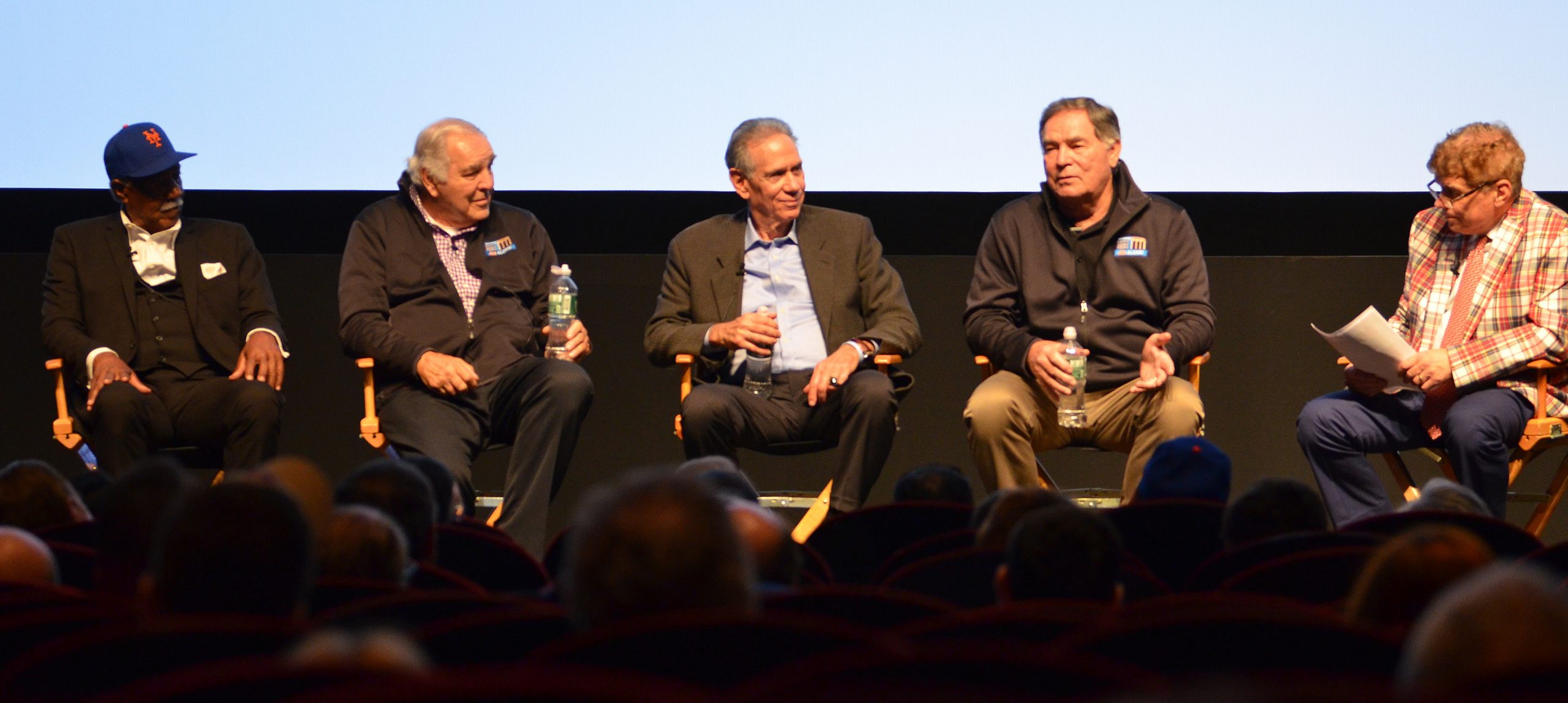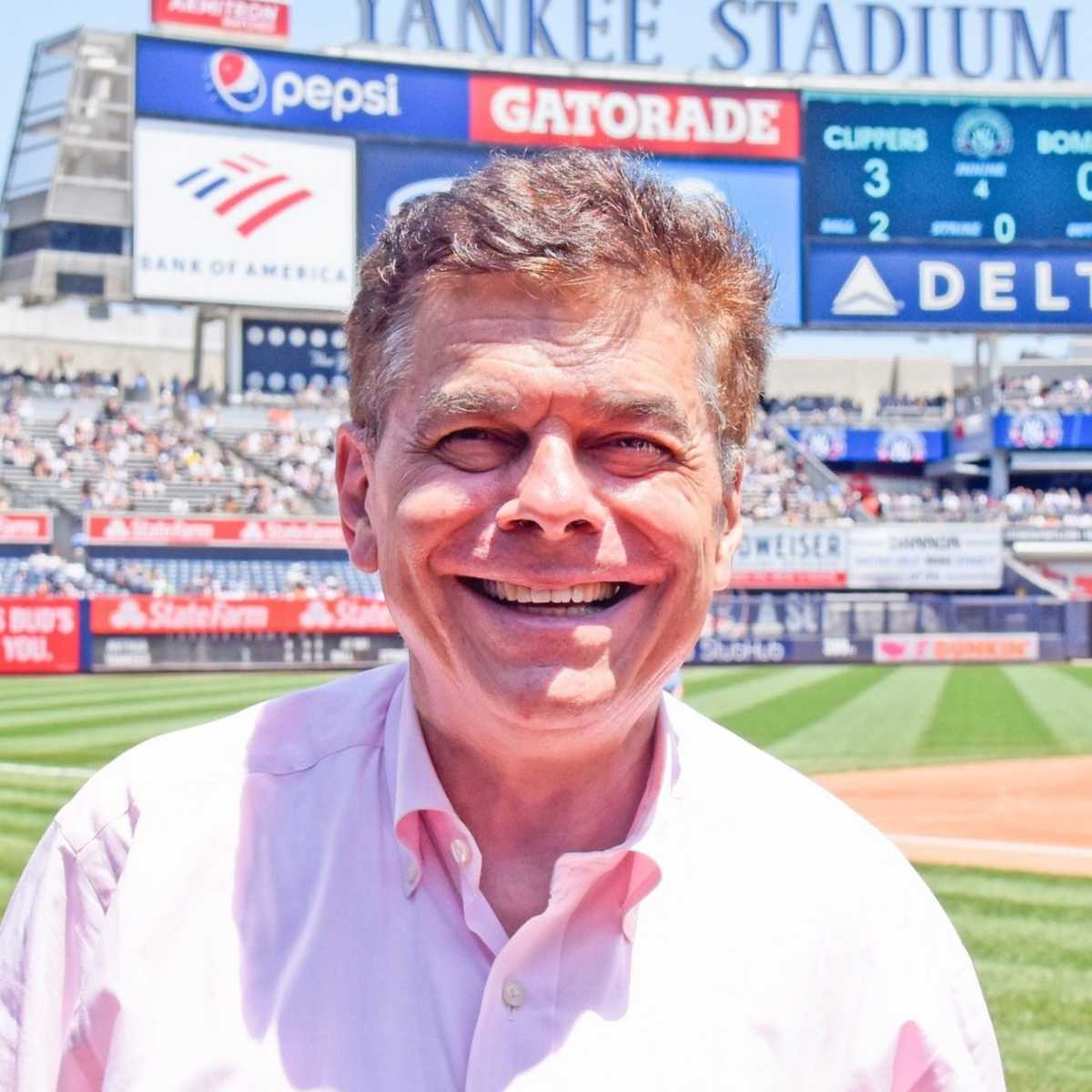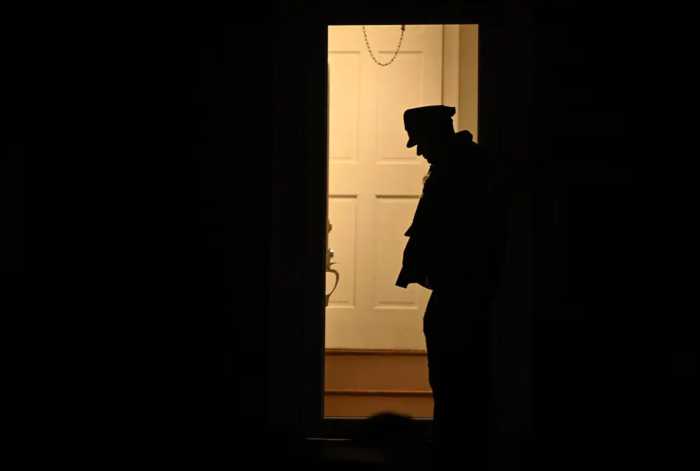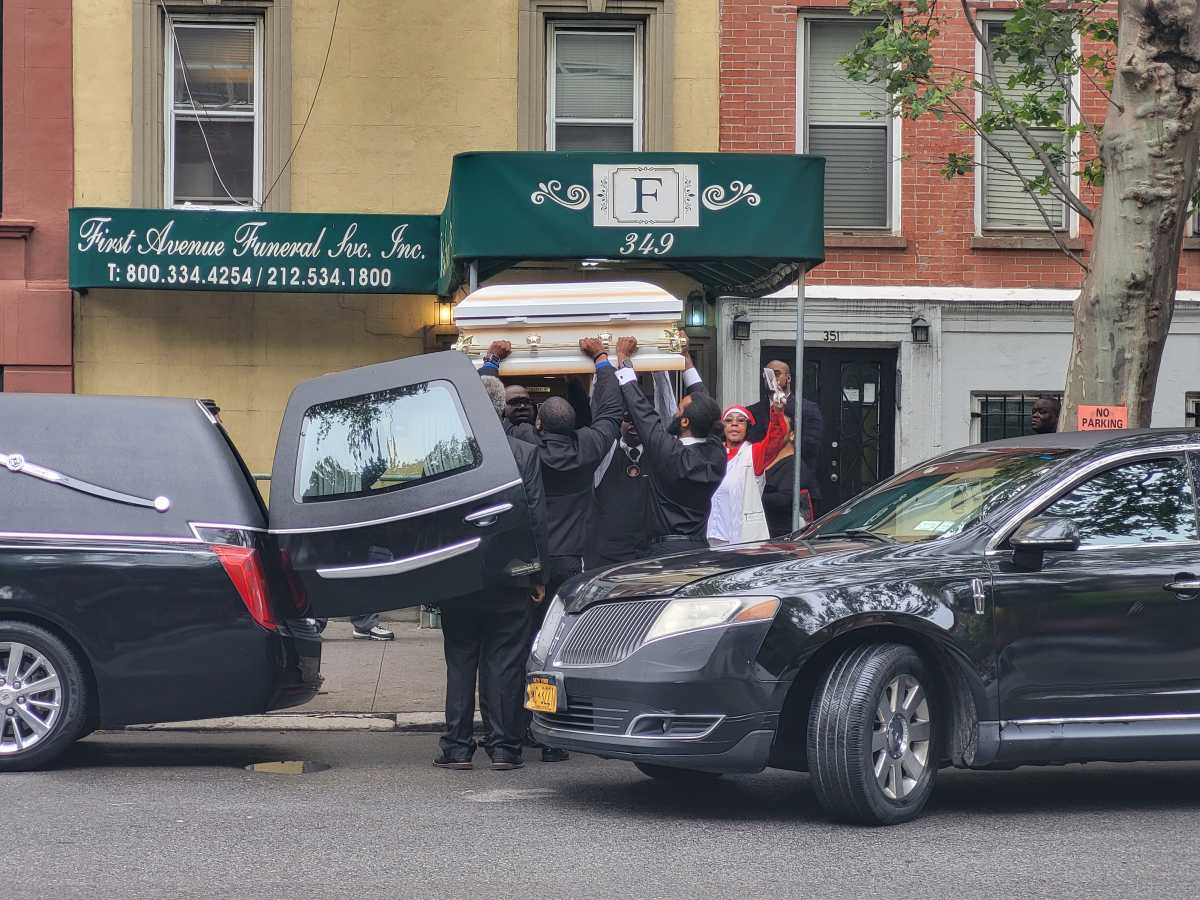For more than four decades, Ed Randall has been a familiar voice and a mainstay on the airwaves, becoming synonymous with baseball and one of New York’s greatest sports-entertainment exports.
Rising to fame in the 1980s with his hit show, Talking Baseball, Randall recorded 500 half-hour television shows with what he describes as “the greatest baseball legends you can imagine,” ranging from Mickey Mantle to Ted Williams, to Yogi Berra, to Cal Ripken, and even Hollywood star and noted Chicago Cubs fan, Bill Murray.
He’s worked on the radio, served as an emergency broadcaster for New York Yankees telecasts, and even filled in for legendary Yankee Stadium PA announcer Bob Sheppard.
“Numbah 23, Don Mattingly. First base. Numbah 23,” he reminisced while doing his best Sheppard impression.
No one could possibly fill the shoes of the man nicknamed “The Voice of God,” who served as the soundtrack to summer days in the Bronx for so many years, but Randall’s rise to success is just as sentimental for New Yorkers rooting for the hometown kid.
“I’m a son of the Bronx. It was where I discovered baseball,” Randall said. “I am a product of 12 years of Catholic school education at All Hallows conveniently located three blocks from Yankee Stadium.”
“I took the subway home from the 161st Street Woodlawn-Jerome station located directly behind the bleachers in centerfield. From there, it was on to the Rose Hill campus of Fordham University where I first broadcast on WFUV-Radio.”
Fordham has its fair share of legendary alums that graduated from its broadcasting ranks — most notably long-time Dodgers announcer, Vin Scully — and Randall emerged from the school at the perfect time.
“After putting in time in the Minor Leagues all over the country, I was lucky to be in the job market just as cable TV sports and sports radio were exploding in the early ‘80s,” Randall said. “Thanks to Upper Deck and HBO, I had a terrific run with Ed Randall’s Talking Baseball.”

Over the decades, the show moved from TV to radio in the volatile New York market but at the turn of the new millennium, Randall faced a challenge that was far more harrowing than sports media.
In 1999, a 47-year-old Randall was faced with the unimaginable that so many men have gone through as he was diagnosed with prostate cancer after a routine annual physical that showed elevated levels in prostate-specific antigen (PSA), a protein produced by the prostate gland which helps detect prostate cancer.
“As with most men, there were no symptoms,” Randall said. “Besides being stopped in my tracks by the word ‘cancer,’ I was also struck by how few of my friends or colleagues knew anything at all about the disease. All I knew was that guys in their forties were not supposed to get this disease.”
According to the American Cancer Society, prostate cancer will affect 1 in 9 men during their lifetimes and is the second most common type of cancer found in American men. It is generally found in older men, with the average age at diagnosis being approximately 66.
Thankfully for Randall, it was detected early, and he was able to make a full recovery thanks to the care of Dr. Nick Romas, now at New York-Presbyterian at Columbia Medical Center.
With his diagnosis and later, his recovery, a vow was made.
“During treatment, I made a promise to myself to use my platform to help make men more aware of this horrible disease and how to make informed decisions about dealing with it,” he said.
So, in 2003, Randall founded Fans for the Cure, a non-profit organization that helps men recognize the risks of prostate cancer while broadcasting the importance of early detection to both extend and save lives. When caught early, the survival rate of prostate cancer is nearly 100%.
In order to do so, he enabled the help of some of the organizations that got him to where he is today — most notably, Minor League Baseball.
Since 2007, Fans for the Cure has visited more than 1,200 ballparks across 39 states and was designated as the official homegrown charity of Minor League Baseball in 2009.
“The Minor Leagues and the support of their teams were instrumental in providing our charity with instant credibility,” Randall said. “Baseball was a world I knew, and being welcomed into Minor League ballparks by the teams and their healthcare partners put us on the map. Particularly in our early days. It was immensely helpful when the Minor Leagues offered us the designation as one of their official charities. The Minor Leagues have been great to us.”
He’s also enlisted the help of some big-time names throughout the years, ranging from former New York Giants linebacker, Harry Carson, to Baseball Hall of Famer Andre Dawson, and 10-time MLB All-Star Steve Garvey, who serves as a chairman of Fans for the Cure.
All three had battles with prostate cancer, and their reach helps spread the good work that Randall’s organization is doing.
“We coordinate PSA screenings, sponsor medical seminars, offer physician and hospital referrals, provide educational materials, and, most recently, host bi-weekly men’s health support groups,” Randall said. “Given that there will be approximately 33,000 deaths nationwide in 2020, we pledge to commit all of our human and financial resources to increase the number of men who will live with the disease rather than die of it.”
For those numbers to improve, men must clear the all-too-often hurdle that comes with the anxiety of just going to the doctor. All too often there is unease at the thought of hearing bad news, which is why many won’t get checked up.
“As someone once told me, ‘As we get older, the bullets get closer.’ If that is indeed the case and if we can assume there will be ‘bad news’ along the way, then let’s find whatever it is as early as possible and be done with it,” Randall said. “By definition, 10 treatment options are better than two, one, or none.”
“If you worried about being scolded by a doctor for no annual physicals in 20 years, then remember to nod vigorously, don’t interrupt, and the speech will be over in a minute. Then you and your doctor can get about the important business of taking control of your health, improving how you feel each day, and extending your life.”
Now over 20 years cancer-free, the 69-year-old Randall continues to do the work he loves, hopping on the radio, talking baseball, and helping ensure that men across America don’t miss life’s moments because of prostate cancer.”
“What I would say is that, most importantly, the diagnosis of prostate cancer is not a death sentence. Deaths have been reduced dramatically since my diagnosis, thanks to dedicated research and the advent of new and effective therapies,” Randall said. “There is an almost 99% cure rate if the disease is detected early. Fans for the Cure is a resource for education that provides solace from fear. Our goal is no empty chairs on Thanksgiving!”





































